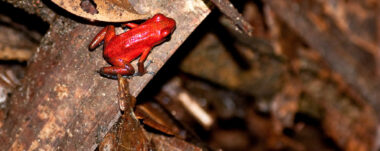What’s the typical breafast in Costa Rica?
Gallo pinto is a traditional Central American dish. Gallo pinto, whose base is rice and beans, has a long history and is important to the identity and culture of Costa Rica and Nicaragua, just as variations of rice and beans are equally important in many Latin American cultures.
Gallo pinto beans are cooked quickly until the juice is almost consumed, and then combined with prepared rice and other ingredients such as cooked peppers, chopped onions and garlic.
Etymology
Gallo pinto means “spotted rooster” in Spanish. The name is said to originate from the multicolored or mottled appearance that results from cooking the rice with black or red beans. The term may also be shortened depending on the region.
History
The exact country of origin of the dish is not known with certainty. Both Costa Rica and Nicaragua claim it as their own, and its origin is a controversial issue between the two countries.
Gallo pinto is one of many Latin American dishes that involve the preparation of the most integral ingredients for many cultures: rice and beans. Gallo pinto is considered a mestizo product; a combination of beans, cultivated by the indigenous people of pre-Columbian times, and rice, a grain introduced by the Spanish. The cooking and preparation are heavily influenced by African cuisine.
Rice, originally from Asia, was introduced by the Arabs in Spain and became a main and versatile ingredient in the 15th and 16th centuries. With the Spanish colonization of the Americas, the Spanish quickly introduced rice to Mexico and South America. It is suggested that, in the 18th century, rice cultivation became important in Central America. Asian rice was cultivated by Africans in the Neolithic period, and with their arrival in America as slaves by the Europeans, they were already accustomed to eating rice. The same happened with beans, which were cultivated centuries before in America. On their voyages to America, slaves were given bowls and a wooden spoon with which they ate twice a day. They ate mostly European or African beans and rice, along with corn, yams, cassava and bisque.
As Africans settled on the continent, various forms of rice and beans began to emerge. As the Americas had many types of beans cultivated by the indigenous people, they gave rise to a number of dishes when combined with rice.
Regional variations
For similar rice and bean dishes around the world, see Rice and beans § International dishes and variations.
Gallo pinto is found in Costa Rica, Guatemala, Nicaragua and Panama. In the Caribbean areas of these countries it is possible to find arroz con frijoles, a similar dish prepared with coconut milk.
Costa Rica
In Costa Rica there are two main variants:
Central Valley: gallo pinto is wetter and is usually prepared with black beans, is less fatty and is seasoned with chili, cilantro and onion. A variant includes Lizano sauce.
Guanacaste: with a fattier and toasted gallo pinto; it is prepared with red beans.
Nicaragua
In Nicaragua, Gallo Pinto is made mainly with red beans. In addition, vegetable oil is used for cooking (includes onion). Gallo Pinto can be eaten in Nicaragua at any time and is the main accompaniment to the different dishes sold in a fritanga (food stall).
Source: Wikipedia




